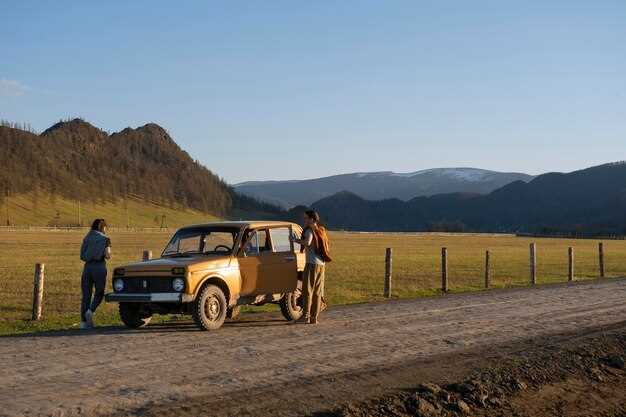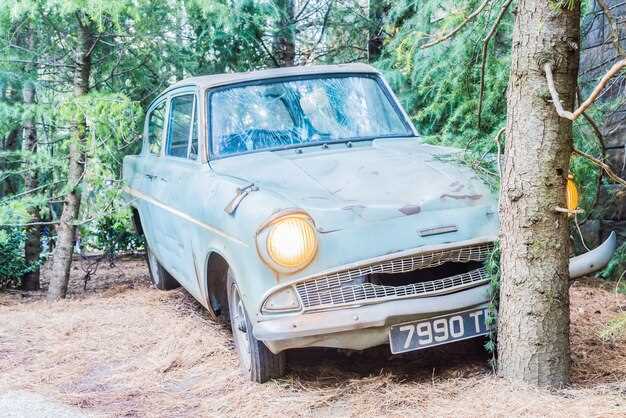
The world of motorsport has always been characterized by innovation and fierce competition, but few eras stand out like the one defined by Group B rally cars. Emerging in the early 1980s, Group B was not just a class; it was a phenomenon that forever changed the landscape of rally racing. These machines were built for speed, showcasing state-of-the-art technology that pushed the boundaries of engineering and performance.
Group B cars were distinct not only for their power but for the raw excitement they brought to the sport. With their turbocharged engines, lightweight frames, and advanced aerodynamics, these vehicles became legends on the stages of various rallies. Icons such as the Audi Quattro, Lancia Delta S4, and Peugeot 205 T16 symbolized the glorious height of rally racing, capturing the imagination of fans and drivers alike.
However, the intoxicating combination of speed and skill behind the wheel soon led to tragedy, resulting in the eventual ban of the Group B category. Despite its short-lived history, the impact of these rally cars continues to resonate in the motorsport community, serving as a milestone that shaped both the culture and technology of modern racing.
What Made Group B Cars the Most Revolutionary in Rallying?

Group B rally cars emerged in the 1980s as one of the most iconic and influential categories in motorsport history. Several factors contributed to their revolutionary impact on rallying, reshaping the sport forever.
- Unprecedented Performance: Group B regulations allowed for a higher degree of freedom regarding engine size and modifications. This led to the development of cars that were incredibly powerful, often exceeding 600 horsepower.
- All-Wheel Drive Technology: Many Group B cars featured cutting-edge all-wheel drive systems, enhancing grip and handling on various surfaces. Vehicles like the Audi Quattro showcased the advantages of this technology, allowing drivers to tackle challenging terrains with confidence.
- Lightweight Construction: Manufacturers utilized advanced materials and innovative designs to produce lightweight cars. This emphasis on reducing weight led to improved acceleration and agility, setting new standards for performance in rallying.
- Dynamic Aerodynamics: The aerodynamic designs of Group B cars were groundbreaking. Features like spoilers and diffusers were incorporated to increase downforce, providing better stability at high speeds.
- Iconic Designs: The aesthetics of Group B cars captured the imagination of fans. Models like the Lancia Delta S4 and Peugeot 205 T16 not only performed exceptionally but also became cultural icons, embodying the spirit of the era.
However, the excitement generated by Group B cars came at a cost, leading to unforeseen challenges:
- Safety Concerns: The extreme power and speed of these cars resulted in a number of serious accidents, raising questions about driver safety and rally event regulations.
- Short Lifespan: The Group B era was short-lived, officially ending in 1986 following increasing safety concerns. Nevertheless, its legacy endures in modern rallying.
In conclusion, Group B cars pushed the boundaries of rally performance and design. Their revolutionary features transformed the sport, influencing future generations of rally cars while leaving an indelible mark on motorsport history.
How Specific Models Defined Performance Standards in Group B Era?

Group B rally cars emerged in the early 1980s, pushing the boundaries of automotive performance and technology. These cars not only captivated fans but also set unprecedented standards in motorsport. Key models like the Audi Quattro, Lancia Delta S4, and Peugeot 205 T16 exemplified the innovation and power that defined this era.
The Audi Quattro was revolutionary, introducing all-wheel drive to rallying. Its turbocharged inline-five engine produced remarkable power, allowing it to conquer diverse terrains with ease. This car established new benchmarks for acceleration and grip, emphasizing the importance of drivetrain technology in competitive racing.
Shortly after, the Lancia Delta S4 combined lightweight construction with an advanced supercharged and turbocharged engine setup. This hybrid approach not only enhanced performance but also showcased the significance of aerodynamics in rally car design. As the Delta S4 dominated events, it set a high bar for both speed and handling, influencing future rally car architectures.
The Peugeot 205 T16 further defined the performance landscape with its compact design and mid-engine layout. Utilizing cutting-edge technology, including a four-wheel-drive system and striking aerodynamic features, it redefined what was possible in terms of power-to-weight ratios. The 205 T16’s success emphasized the critical role of engineering in achieving competitive advantages.
Each of these iconic cars exemplified the Group B ethos: a relentless pursuit of speed and technological advancement. They not only shaped the landscape of rally racing in the 1980s but also left an indelible mark on the motorsport industry, influencing car design and performance standards for generations to come.
Which Technological Innovations Emerged from Group B Rally Cars?
The Group B era of rallying, which spanned from the early 1980s to the mid-1980s, was marked by unprecedented advancements in automotive technology. These cars, characterized by their high-performance capabilities, served as a testing ground for innovations that not only transformed rally racing but also influenced the broader automotive industry.
One of the most significant technological leaps was the introduction of turbocharging. Cars like the Audi Quattro showcased how turbocharged engines could deliver incredible power from relatively small displacement units. This technology allowed manufacturers to develop lighter and faster cars while improving acceleration and overall performance.
All-wheel drive (AWD) was another groundbreaking feature popularized by Group B vehicles. The Audi Quattro’s success demonstrated the advantage of AWD in handling and stability on diverse rally terrains, leading to its adoption in both racing and consumer cars. This innovation provided drivers with enhanced grip and control, particularly in slippery conditions.
Advanced aerodynamics also played a critical role in the design of Group B cars. The use of spoilers, diffusers, and other aerodynamic elements helped optimize downforce and reduce drag, enabling these cars to achieve higher speeds with better stability. Such enhancements have since become standard in the development of high-performance vehicles.
The lightweight materials used in construction, such as advanced composites and alloys, were further refined during the Group B era. Manufacturers focused on reducing weight without sacrificing strength, allowing for faster acceleration and improved handling characteristics. This trend toward lightweight design has had a lasting impact on the automotive industry.
Additionally, electronic systems began to make their way into rally cars, with innovations in fuel injection and engine management systems offering better performance and efficiency. These technologies have since evolved into the sophisticated electronic control units (ECUs) found in modern vehicles, providing improved performance metrics and diagnostics.
In summary, the legacy of Group B rally cars extends beyond their thrilling performances. They catalyzed significant technological advancements that reshaped not only motorsport but also the automotive industry as a whole, paving the way for modern high-performance cars.




